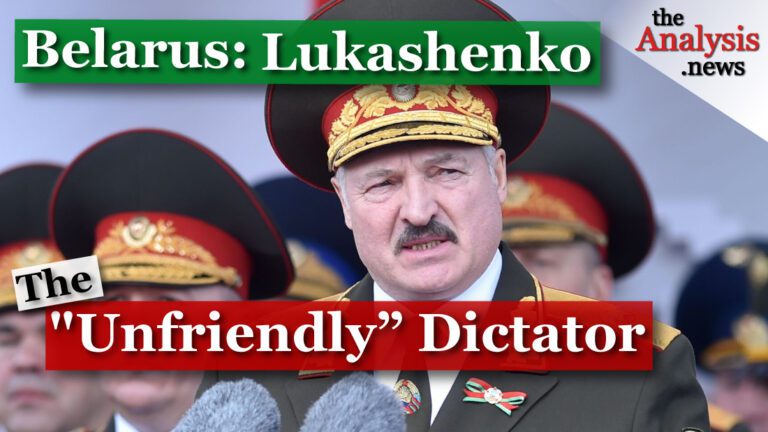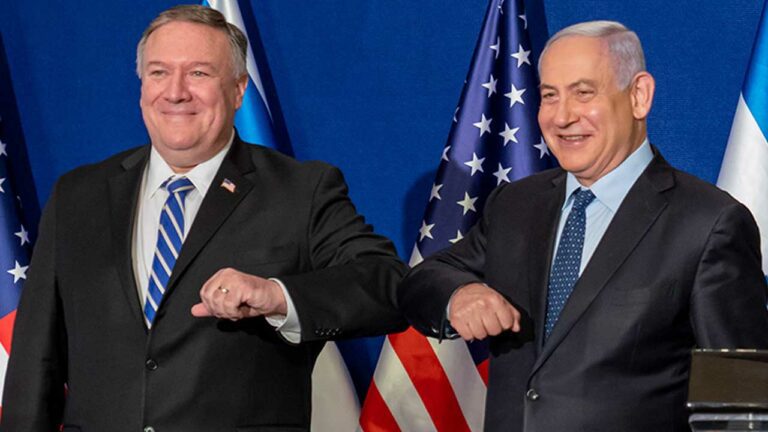Trump’s tariff war isn’t about protecting jobs — it’s part of a global strategy to empower a far-right alliance with Putin, Orbán, and nationalist movements across Europe. This episode exposes how economic sabotage and weaponized antisemitism fuel authoritarianism — and how workers and students are fighting back.
Part One – Trump Tariffs: The Madman Theory Applied to Economics (and what we should do about it)
Part Two – Boast About Jobs, Suppress Worker Power
Part Four – Cracks in the Trump Coalition: Civil War Among the Elites
Part Five – Building a Real Alternative: Get Organized
Podcast: Play in new window | Download | Embed
Subscribe Apple Podcasts | Spotify | Android | iHeartRadio | Blubrry | TuneIn | Deezer | RSS
Never miss another story
Subscribe to theAnalysis.news – Newsletter

While Trump publicly postures as tough on America’s adversaries, his actual strategy reveals a very different agenda: rapprochement with Putin’s Russia and economic warfare against U.S. allies in Europe. Tariffs targeting European exports — from German machinery to French wine — are not just protectionist bluster; they’re a calculated effort to destabilize centrist and center-right governments that still defend liberal democracy and multilateralism. The goal is to trigger inflation, provoke political crises, and create openings for far-right parties aligned with the Trump-Putin-Orbán axis. This is economic statecraft as sabotage: using U.S. leverage to weaken democratic institutions abroad while fostering an international bloc of authoritarian nationalism rooted in fossil fuels, militarized borders, and surveillance capitalism.
The American far right isn’t just cheering on its European counterparts — it’s actively supporting them. Steve Bannon has traveled repeatedly to Europe, meeting with nationalist parties in Italy, France, Hungary, and Poland to help build a transatlantic alliance of far-right movements. His project, The Movement, explicitly aims to unite authoritarian conservatives across borders. J.D. Vance and other MAGA Republicans frame this intervention as a defense of “free speech” and “sovereignty,” but their real goal is to legitimize xenophobic, anti-democratic forces gaining ground across the continent. From supporting Hungary’s Orbán to praising France’s Le Pen, the American right is providing both ideological cover and strategic support for a Europe-wide assault on pluralism, migrants, climate policy, and democratic institutions. This isn’t just alignment — it’s coordination.
In a disturbing echo of McCarthyism, the fight against antisemitism has been cynically repurposed by the right as a Cold War-style weapon — not to protect Jewish people, but to attack progressives, suppress criticism of Israel’s barbaric genocide in Gaza, and silence even progressive Jews who challenge militarism, apartheid, or corporate power. Students have been expelled (in many cases this means they also lost their housing and employment), physically assaulted by fascist mobs and the police, kidnapped and detained, and deported without due process.
Of course, real hatred of Jews exists — and has existed for thousands of years. Its most violent and enduring homes have been Europe and Russia. In the United States, it has found expression even among elites — most recently Donald Trump himself, who has platformed antisemites like Nick Fuentes, spread Soros conspiracy theories, and deployed antisemitic dog whistles, including the term “globalists,” often used as coded language for Jewish financiers or elites supposedly undermining national sovereignty.
The irony is stark: punishing imaginary antisemitism to repress the left, while supporting real antisemitism in Europe and the United States to support his far-right axis.
Across Europe, however, there are growing signs that people are pushing back. In Germany, mass protests have erupted against the AfD’s rise, with tens of thousands rallying in defense of democracy and migrant rights. In France, widespread mobilizations against pension cuts and far-right rhetoric have drawn support from across the political spectrum. Poland’s 2023 election, which ousted the ultra-conservative PiS party, showed that coordinated opposition can defeat authoritarian trends. Even in Hungary, long seen as a stronghold of the far right, grassroots activists, independent journalists, and students continue to resist Viktor Orbán’s tightening grip. These struggles are uneven and often underreported, but they represent a vital European front in the global battle against authoritarianism.
In the United States, too, students, teachers, and even some university administrations are courageously resisting. Despite threats, firings, and political pressure, many are standing firm against the weaponization of antisemitism used to force a right-wing agenda onto curricula and campus life. At Harvard, Columbia, Rutgers, and the University of Chicago, faculty senates, student coalitions, and even some administrators have pushed back — defending academic freedom and resisting efforts to criminalize protest. In response, Trump has threatened to revoke Harvard’s charitable status, signaling a willingness to use federal power to punish institutions that refuse to comply with his narrative. These attacks are not about protecting Jewish students — they’re about silencing dissent and reshaping higher education in the image of authoritarian nationalism.
The strategy is not new. In 1931, Mussolini forced all Italian university professors to swear loyalty to the fascist regime — purging those who refused and transforming higher education into a tool of ideological control. Let’s remember how Mussolini ended up — executed and put on display, hanging upside down from a lamppost.
The Gamble: Control Labor, Rebuild Empire — or Lose Both
Trump’s team assumes new manufacturing will concentrate in anti-union states. They assume labor will remain divided by anti-immigrant politics and mass deportations. They assume wage increases will be modest and manageable. They assume rising job numbers will strengthen nationalist loyalty without empowering organized resistance. They assume administrative purges will eliminate bureaucratic opposition. And they assume climate collapse can be contained through repression rather than transformation.
But this could easily backfire
Successful union drives are already breaking through in traditionally hostile states. Mass deportations could radicalize sections of the workforce. Rising labor consciousness among younger generations could ignite a new wave of militant organizing. Extreme tariffs and administrative chaos could trigger global instability and recession. And political resistance could surge if working people recognize the system being imposed on them — especially amid accelerating ecological collapse.
North American and European workers are realizing that supporting workers in the Global South gives them more leverage — not less. A coordinated strike in Chennai or Manila can disrupt a supply chain and strengthen a strike in Chicago or Berlin. Solidarity isn’t charity — it’s strategy.
As workers, activists, and international movements seize the moment — as unions expand rapidly and cross-border solidarity deepens — the very strategy meant to reassert elite control could ignite a rebirth of organized resistance powerful enough to challenge it.
This is the end of segment three.
The next segment will be about the war in Trump Land, how this cabal of crazies is turning on itself.
Again, please be patient, the final part will be about people who are organizing to resist and how we can take advantage of the chaos, to build a better world.





